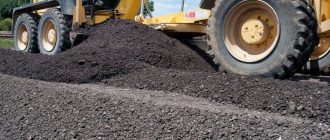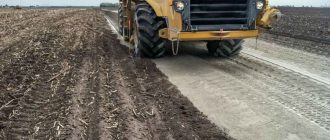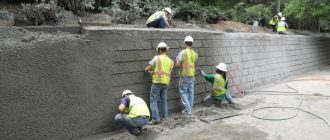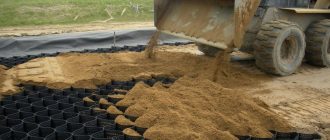
Soil Stabilization in Historical Restoration: Challenges and Solutions
In the world of historical restoration, soil stabilization plays a critical role in ensuring the longevity and structural integrity of ancient buildings and monuments. The challenges faced in this process are multifaceted and require innovative solutions to overcome.
One of the primary challenges in soil stabilization for historical restoration is the preservation of the original soil composition. The soil surrounding historical structures often contains important archaeological artifacts and cultural remains. Preservationists must strike a delicate balance between stabilizing the soil and protecting these valuable artifacts.
A second challenge arises from the unique properties of soil and its impact on the structural stability of historical buildings. The characteristics of the soil, such as its moisture content and subsurface conditions, can significantly affect the stability of the surrounding structures. Therefore, implementing effective soil stabilization techniques becomes crucial in preventing potential damage or collapse.
Fortunately, there are various solutions available to address these challenges. Experienced restoration professionals have developed sophisticated methods for soil stabilization, such as chemical treatments to strengthen the soil or introducing geosynthetic materials to enhance stability. These solutions not only reinforce the soil but also contribute to the long-term preservation of historical structures.
Quote: “Soil stabilization in historical restoration is a delicate process that requires careful consideration of the unique challenges we face. By implementing innovative solutions, we can ensure the preservation of our cultural heritage for future generations to appreciate and learn from.” – Dr. Elizabeth Johnson, Preservation Specialist
In conclusion, soil stabilization in historical restoration is an intricate undertaking that demands a thorough understanding of the soil’s characteristics and the challenges it presents. However, with the implementation of effective solutions and the expertise of restoration professionals, we can overcome these challenges and ensure the preservation and longevity of our historical treasures.
Soil Stabilization: Challenges and Effective Solutions
Soil stabilization is a crucial aspect of historical restoration projects. The soil composition of historical sites often poses unique challenges, with issues such as erosion, settling, and compaction affecting the stability of structures and the preservation of historical artifacts. Without proper soil stabilization, the long-term success of restoration efforts can be compromised.
One of the key challenges in soil stabilization for historical restoration is the preservation of historical integrity. The goal is to stabilize the soil without altering the original historic character of the site. This requires careful consideration of the materials and techniques used, as well as a comprehensive understanding of the site’s historical significance.
Another challenge is the variability of soil conditions. Historical sites can have a wide range of soil types, including clay, sand, silt, and loam. Each type of soil has its own unique properties and challenges, requiring specific stabilization solutions. Understanding the soil composition and its behavior is essential in order to implement effective and tailored stabilization measures.
Effective solutions for soil stabilization in historical restoration involve a combination of techniques and materials. Common approaches include soil compaction, soil reinforcement, and the use of additives such as lime or cement. In addition, proper drainage systems can help mitigate erosion and maintain the stability of the soil over time.
Furthermore, monitoring and maintenance play a crucial role in ensuring the long-term success of soil stabilization efforts. Regular inspections and necessary repairs should be conducted to address any potential issues before they escalate. Additionally, ongoing monitoring of the site’s soil conditions can help identify and address any changes or challenges that may arise.
- Thorough site analysis to assess soil composition and behavior
- Preservation of historical integrity during soil stabilization
- Tailored stabilization solutions based on soil type
- Utilization of techniques like compaction, reinforcement, and additives
- Incorporation of drainage systems to mitigate erosion
- Regular monitoring and maintenance for long-term success
In conclusion, soil stabilization in historical restoration projects presents unique challenges due to the preservation of historical integrity and the variability of soil conditions. Implementing effective solutions requires a comprehensive understanding of the site’s historical significance, thorough analysis of soil composition, and the utilization of tailored stabilization techniques and materials. Regular monitoring and maintenance are vital to ensuring the long-term stability of the site and the preservation of its historical value.
Preservation of Historical Sites
The preservation of historical sites plays a crucial role in maintaining the cultural heritage of a region or country. Stabilization and restoration processes are essential in ensuring the longevity and integrity of these sites. However, these efforts often come with various challenges that need to be overcome in order to implement effective solutions.
One of the main challenges in the preservation of historical sites is the deterioration of the soil. Over time, the soil surrounding these sites can become weak and unstable, posing a threat to the structural stability of the buildings or artifacts. Addressing this challenge requires careful analysis and evaluation of the soil conditions.
Another challenge is the incorporation of stabilization techniques without causing damage to the historical structures. The use of modern materials and methods should be carried out with utmost caution to ensure that the authentic elements of the site are not compromised. This requires a thorough understanding of the compatibility between the historical materials and the stabilization techniques.
Implementing effective solutions in the preservation of historical sites involves utilizing sustainable and environmentally-friendly methods. The use of organic stabilizers or bio-based materials can reduce the negative impact on the surrounding environment while providing long-term stabilization benefits.
Furthermore, the collaboration between archaeologists, architects, engineers, and other professionals is crucial in successfully preserving historical sites. By combining their expertise and knowledge, they can develop comprehensive restoration plans that address the unique challenges of each site.
In conclusion, the preservation of historical sites requires careful consideration of the challenges posed by soil deterioration, the compatibility of stabilization techniques, and the need for sustainable solutions. By overcoming these challenges and implementing effective solutions, the historical integrity and cultural significance of these sites can be preserved for future generations.
Importance of Soil Stabilization
Soil stabilization plays a crucial role in historical restoration projects, as it helps address the unique challenges associated with preserving and restoring historical structures. These challenges often stem from the deteriorated state of the soil supporting these structures over time.
One of the main challenges in historical restoration is the instability and erosion of the soil. The natural aging processes, environmental factors, and the weight of the structure itself can cause the soil to shift, settle, and erode, leading to structural damage and potential collapse. Without proper stabilization, the restoration efforts may be compromised, and the structure may further deteriorate.
Effective soil stabilization solutions are essential for mitigating these challenges and ensuring the long-term preservation of historical structures. They involve techniques and materials that strengthen and stabilize the soil, preventing further erosion and settling.
There are various solutions available for soil stabilization, depending on the specific needs of the restoration project. These include the use of geotextiles, soil cement, lime stabilization, and chemical grouting, among others. Each solution has its own advantages and applications, allowing engineers and restoration experts to tailor their approach to the unique requirements of the project.
By implementing proper soil stabilization techniques, historical restoration projects can address the challenges posed by unstable soil conditions. Furthermore, these techniques help ensure the structural integrity of the historical structure, maintain its historical authenticity, and extend its lifespan for future generations to appreciate.
Historical Structures and Soil Erosion
Restoring historical structures involves various challenges, and one of the significant issues faced is soil erosion. Historical buildings and monuments are often surrounded by soils that have been exposed to harsh weather conditions for centuries, causing significant damage.
Soil erosion poses a threat to the stability and structural integrity of these historical structures. The constant exposure to wind and water weakens the soil, leading to the loss of soil particles, which results in the destabilization of the foundation.
Addressing soil erosion in historical restoration projects requires implementing effective stabilization solutions. These solutions should not only prevent further erosion but also restore and preserve the historical character and architectural integrity of the structure.
One effective method of soil stabilization in historical restoration is the use of erosion control mats or blankets. These mats are made from natural materials such as straw or coconut fibers and are laid on the surface of the soil. They provide immediate protection against erosion by reducing the impact of raindrops and preventing the loss of soil particles.
In addition to erosion control mats, reinforcement techniques such as soil nailing and chemical grouting can be used to stabilize the soil and strengthen the foundation. Soil nailing involves the insertion of long steel bars into the soil, creating a stable anchor. Chemical grouting, on the other hand, involves injecting stabilizing chemicals into the soil to improve its strength and stability.
It is essential to carefully consider the specific challenges and requirements of each historical structure during the soil stabilization process. In some cases, a combination of different stabilization methods may be necessary to ensure the long-term preservation of the structure.
Overall, soil erosion poses a significant challenge in the restoration of historical structures. By implementing effective solutions such as erosion control mats, soil nailing, and chemical grouting, it is possible to overcome these challenges and ensure the preservation of these important historical landmarks.
Environmental Factors Affecting Soil Stability
When it comes to soil stabilization in historical restoration, it is crucial to consider the environmental factors that can affect the stability of the soil. These factors can present significant challenges and require effective solutions in order to ensure the success of restoration projects.
One of the key environmental factors that can impact soil stability is water. Excess moisture or poor drainage can weaken the soil structure, leading to instability and potential damage to historical structures. Solutions such as implementing proper drainage systems or using moisture barriers can help mitigate the negative effects of water on soil stability.
Another environmental factor to consider is temperature. Extreme temperature fluctuations can cause expansion and contraction of the soil, which can lead to cracks and instability. Proper insulation and thermal regulation techniques can be employed to minimize the impact of temperature on soil stability in historical restoration projects.
Vegetation can also play a role in soil stability. The root systems of plants can either stabilize the soil or contribute to its erosion. Understanding the impact of vegetation on soil stability is important when planning restoration projects. Planting the right types of vegetation, such as those with deep and strong root systems, can help maintain soil stability and prevent erosion.
In addition to these factors, other environmental elements such as wind and seismic activity may also affect soil stability. Implementing measures such as windbreaks or stabilizing structures can help counteract these influences and ensure the long-term stability of the soil.
Overall, considering and addressing the environmental factors that affect soil stability is essential in historical restoration projects. By identifying and implementing effective solutions to these challenges, professionals can ensure the preservation and longevity of historical structures while maintaining the integrity of the surrounding soil.
Challenges in Restoring Historical Structures
Restoring historical structures presents unique challenges, particularly when it comes to soil stabilization. Historical buildings often have foundations that were constructed using traditional methods and materials that may not meet modern structural and safety standards. This can result in soil instability issues that need to be addressed during the restoration process.
One common challenge in restoring historical structures is the identification and understanding of the soil conditions surrounding the building. The soil composition and properties can vary significantly from one location to another, and this can have a direct impact on the stability and durability of the structure. In some cases, the soil may be prone to erosion, settling, or other forms of instability that can compromise the integrity of the building.
Another challenge is finding effective solutions for stabilizing the soil around historical structures. Traditional methods of soil stabilization, such as chemical treatment or mechanical compaction, may not be suitable or permissible in the context of historical restoration. Furthermore, these methods may not be effective in addressing specific soil conditions or achieving the desired level of stability.
To overcome these challenges, innovative solutions are often required. This may involve the use of alternative soil stabilization techniques, such as soil reinforcement or geosynthetics. These methods can provide additional support to the soil, improving its stability without compromising the historical integrity of the structure. In some cases, a combination of different techniques may be necessary to achieve optimal results.
| Identification and understanding of soil conditions | Site investigation and soil testing to determine soil properties |
| Compatibility with historical restoration | Exploring alternative soil stabilization techniques |
| Achieving desired level of stability | Combining different soil stabilization methods for optimal results |
Innovative Soil Stabilization Techniques
In the field of historical restoration, soil stabilization plays a crucial role in ensuring the longevity and structural integrity of the restored buildings and structures. Traditional soil stabilization methods have been used for centuries, but with the advancement of technology, new and innovative techniques have also emerged.
One such technique is the use of geosynthetics, a type of material that is specifically designed to improve soil properties. Geosynthetics can be used in various forms, such as geotextiles, geogrids, or geomembranes, depending on the specific needs of the restoration project. These materials can help distribute load more efficiently, reduce soil erosion, and provide reinforcement to unstable soil.
Another innovative technique is the use of chemical stabilization. By adding certain chemicals to the soil, it is possible to alter its properties and improve its stability. For example, lime and cement can be added to clay soils to increase their strength and reduce their plasticity. This method is particularly effective in areas where the soil composition is unfavorable for restoration work.
Furthermore, soil stabilization through the use of injection grouting has proven to be an effective solution for historical restoration projects. This technique involves injecting a grout material into the soil, which then hardens and stabilizes the surrounding soil particles. Injection grouting can be used to fill voids, stabilize loose soil, and improve overall soil cohesion.
Overall, these innovative soil stabilization techniques offer new and effective solutions for historical restoration projects. By utilizing these methods, restoration professionals can overcome the challenges posed by unstable soil conditions and ensure the long-lasting preservation of historical buildings and structures.
Benefits of Soil Stabilization in Historical Restoration
Soil stabilization plays a crucial role in the restoration of historical structures and landscapes, providing numerous benefits that help overcome the challenges faced in these projects. By effectively stabilizing the soil, restoration efforts can achieve long-lasting and sustainable solutions.
Here are some key benefits of soil stabilization in historical restoration:
- Improved structural stability: Stabilizing the soil helps create a solid foundation, enhancing the structural stability of historical buildings, monuments, and landscapes. By addressing soil erosion and settlement issues, stabilization prevents further damage and preserves the integrity of these structures.
- Prevention of water damage: Historical structures are often vulnerable to water damage, which can lead to deterioration and decay. Soil stabilization helps enhance drainage and reduce water infiltration, preventing moisture-related issues and ensuring the longevity of these historical landmarks.
- Protection against environmental factors: Soil stabilization provides a protective barrier against various environmental factors, such as wind and seismic forces. By strengthening the soil, restoration projects can withstand natural disasters and external pressures, ensuring the preservation of historical sites for future generations.
- Cost-effectiveness: Implementing soil stabilization techniques can be a cost-effective solution compared to traditional reconstruction methods. By stabilizing the existing soil, restoration projects can reduce the need for extensive excavation and foundation work, ultimately saving time and resources.
- Sustainability: Soil stabilization promotes environmental sustainability by reducing the need for new construction materials and minimizing waste generation. By utilizing existing soil and stabilizing it for restoration purposes, these projects contribute to a more sustainable approach to historical preservation.
Overall, the benefits of soil stabilization in historical restoration cannot be overstated. By addressing the challenges and implementing effective solutions, these projects can ensure the longevity and preservation of our cultural heritage.
Case Study: Successful Soil Stabilization Projects
Implementing effective solutions for soil stabilization is crucial in historical restoration projects. In this case study, we will explore two successful soil stabilization projects and the challenges faced during their implementation.
Project 1: Historical Castle Restoration
The first project involved the restoration of a historical castle that had experienced significant soil erosion over the years. The challenge was to stabilize the soil around the castle’s foundation to prevent further damage to the structure.
A team of experts implemented a solution that involved a combination of soil stabilization techniques, including the use of geotextiles and soil grouting. The geotextiles were placed strategically to provide reinforcement and prevent soil movement, while soil grouting was used to fill in voids and strengthen the soil.
The successful implementation of these techniques resulted in the stabilization of the soil around the castle, preventing further erosion and ensuring the preservation of the historical structure.
Project 2: Historic Roadway Renovation
The second project focused on stabilizing the soil beneath a historic roadway that had been damaged by heavy traffic and weather conditions. The challenge here was to provide a stable foundation for the roadway while preserving its historical integrity.
To overcome this challenge, a combination of soil stabilization techniques was implemented. This included the use of soil nails to provide additional stability, the application of chemical stabilizers to improve the load-bearing capacity of the soil, and the reinforcement of the roadway with a layer of geogrids.
By implementing these solutions, the soil beneath the roadway was successfully stabilized, ensuring its durability and longevity while preserving its historical significance.
- Project 1 involved the restoration of a historical castle and utilized geotextiles and soil grouting for soil stabilization.
- Project 2 focused on stabilizing a historic roadway using soil nails, chemical stabilizers, and geogrids.
In conclusion, these case studies demonstrate that overcoming challenges in soil stabilization during historical restoration projects is possible with the right solutions and techniques. By effectively stabilizing the soil, we can ensure the long-term preservation of historical structures and roadways, safeguarding their historical significance for future generations.
Collaboration between Architects, Engineers, and Conservationists
Restoration of historical sites often presents unique challenges, especially when it comes to soil stabilization. A successful restoration project requires close collaboration between architects, engineers, and conservationists to overcome these challenges and implement effective solutions.
Architects play a crucial role in the restoration process as they are responsible for understanding the historical significance of the site and designing a restoration plan that respects its heritage. They work closely with engineers to assess the structural integrity of the soil and determine the best stabilization techniques to be used.
Engineers bring their expertise in soil mechanics and geotechnical engineering to the table. They conduct thorough site investigations and soil analysis to identify the specific challenges posed by the soil at the historical site. With this information, they can develop customized stabilization solutions that are both effective and sensitive to the historical context.
Conservationists are the advocates for preserving the historical integrity of the site. Their knowledge and experience in the field of historic preservation are invaluable in ensuring that the restoration work respects the authenticity of the site. They work closely with architects and engineers to find solutions that balance the need for stabilization with the need for preservation.
A collaborative approach between architects, engineers, and conservationists is essential to the success of any soil stabilization project in historical restoration. Regular communication and information sharing ensure that each stakeholder’s expertise is fully utilized and integrated into the restoration plan. Through this collaboration, challenges can be identified and addressed, and effective solutions can be implemented to stabilize the soil while preserving the historical significance of the site.
Future Trends in Soil Stabilization for Historical Preservation
As the field of historical preservation continues to evolve, innovative approaches for soil stabilization are becoming increasingly important. Preservation efforts often face unique challenges when it comes to stabilizing soil in historical sites, as traditional methods may not be suitable for the delicate environments and materials present. In order to overcome these challenges, researchers and practitioners are exploring new solutions and technologies that can effectively preserve the integrity of historical structures and landscapes.
- Advanced Stabilization Techniques: One future trend in soil stabilization for historical preservation is the development of advanced techniques that utilize cutting-edge materials and methodologies. These techniques aim to provide long-lasting stabilization while minimizing negative impacts on the environment and historical features. Examples include the use of biodegradable soil stabilizers and nanotechnologies that strengthen soil aggregates.
- Environmentally Friendly Approaches: In response to the growing emphasis on sustainability, future trends in soil stabilization for historical preservation also include the adoption of environmentally friendly approaches. These approaches focus on using organic and natural materials, such as bio-polymers or recycled products, to stabilize soil. Additionally, eco-friendly practices, such as rainwater harvesting and permeable paving, can help mitigate water-related problems and promote healthier soil conditions.
- Data-driven Solutions: Another trend in soil stabilization for historical preservation is the integration of data-driven solutions that enable more accurate and targeted approaches. Through the use of sensors, monitoring systems, and data analysis, practitioners can gather valuable information about soil properties and performance, allowing for informed decision-making and optimized strategies for stabilization. This can lead to more efficient use of resources and better long-term preservation outcomes.
- Collaboration: Collaboration between different disciplines, such as architecture, engineering, and archaeology, is a crucial trend in soil stabilization for historical preservation. By bringing together experts from various fields, a holistic approach can be taken to tackle the unique challenges of stabilizing soil in historical sites. This collaborative effort allows for a comprehensive understanding of the historical context and the development of innovative solutions that are tailored to the specific needs of each project.
Overall, future trends in soil stabilization for historical preservation are focused on finding sustainable, technologically advanced, and collaborative solutions. By staying abreast of these trends and embracing new approaches, the field of historical restoration can effectively overcome challenges and ensure the long-term preservation of our valuable historical heritage.
Frequently asked questions:
How does soil stabilization play a role in historical restoration?
Soil stabilization plays a crucial role in historical restoration as it helps to preserve and restore historical structures by ensuring their stability and longevity. It involves treating the soil to improve its engineering properties, such as strength and load-bearing capacity, to support the weight of the structure and prevent erosion.
What are the challenges faced in soil stabilization during historical restoration?
There are several challenges faced in soil stabilization during historical restoration. Some of them include dealing with the different types and properties of soil found in historical sites, working with aged and deteriorated structures, and preserving the historical integrity of the site while implementing stabilization techniques.
What are some effective solutions for overcoming the challenges in soil stabilization during historical restoration?
Some effective solutions for overcoming the challenges in soil stabilization during historical restoration include conducting thorough site investigations and soil testing to understand the soil properties, using appropriate stabilization techniques such as chemical stabilization or mechanical methods, and working closely with restoration experts and engineers to create a comprehensive stabilization plan.
Can soil stabilization techniques be harmful to historical structures?
If not implemented properly, some soil stabilization techniques can potentially be harmful to historical structures. For example, the use of certain chemicals or excessive force during stabilization can cause damage to the structure’s foundation or compromise its historical integrity. It is important to carefully assess and tailor the stabilization techniques to each specific historical structure to minimize potential harm.
Are there any case studies or examples of successful soil stabilization in historical restoration?
Yes, there are numerous case studies and examples of successful soil stabilization in historical restoration. One notable example is the stabilization of the Leaning Tower of Pisa in Italy, where a combination of soil consolidation and foundation underpinning techniques was employed to prevent further leaning and ensure the stability of the iconic structure. Other examples include the stabilization of historical buildings in earthquake-prone areas or regions with unstable soil conditions.
What is soil stabilization?
Soil stabilization is a process that involves treating soil to improve its strength and durability. It is often used in construction and historical restoration projects to enhance the stability of the soil and prevent erosion.






